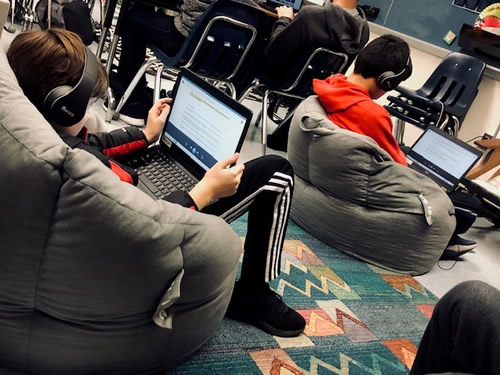Low reading ability is a major contributor to learning inequality in our schools.
An estimated 26 million students have learning differences, including tens of thousands of students with dyslexia, a neurological condition that affects reading and related language-based processing skills.
Unless educators can find new approaches to deliver reading instruction and personalize learning environments for these frustrated learners, many will fail.
Students with learning differences are more likely to struggle academically, socially and emotionally. This is unfortunate, since many of these students have the intellectual capacity to succeed and even excel if they could just overcome their reading challenges.
Related: Want to get struggling readers enthusiastic about reading? Here’s how
How can a teacher with a class of 15, 20, or 25 students, many of whom read below grade level, address each learner’s instructional needs while keeping them all on track to read age-appropriate materials and have the learning confidence to succeed? These two teachers have found the answers through audiobooks and access.
Making reading more enjoyable for all
Joelle Nappi, a dyslexia therapist for Dwight D. Eisenhower Middle School in Freehold Township, N.J., works with students who feel embarrassed and marginalized by their struggles with reading. Since her district expanded access to grade-level text by providing human-read audiobook technology, Nappi’s students’ reading skills and confidence have improved dramatically. “We just wanted more students to enjoy a successful reading experience first,” she says.
With their headphones on, her students listen to novels or informational text narrated by individuals who know the subject matter. Students follow along on their computer screens or smartphones. Many of the audiobooks feature onscreen highlighting for a multisensory learning experience. Students like the Chrome and mobile apps for the built-in classroom tools that allow them to take notes for book reports, do research, and build vocabulary lists all in one place.
Nappi says such features are important because struggling readers don’t need any more complications when it comes to completing assignments.
The power of technology
With the help of a variety of reading programs like the Wilson Reading System, Just Words, Project Read®, and Learning Ally, Nappi is seeing positive results across the board. Her students are reading books and are happy to talk about what they read—a rare occurrence for struggling readers.
“Giving my students access to digital text and time to read increases the odds they will be inclined to learn more,” says Nappi. “When students are given multiple ways to absorb information—on paper, on the computer, with an app—they are more motivated to engage with the curriculum.” Since introducing the new reading technology, Nappi has seen marked improvements in students’ comprehension skills. Another advantage is that more of her students turn in their assignments on time.
Giving students access to books that interest them
At Stephen F. Austin High School in Sugar Land, Texas, 10th-graders read rigorously in their global studies English II courses, even though many are not skilled readers. In this high school, an estimated one in four students has been identified with a learning difference like ADHD or dyslexia, and 25 percent of the student body is economically disadvantaged.
Stacy Allen Webster, the instructor, says, “No student should ever be denied access to a rich library of world literature, even if they aren’t strong readers or don’t have Internet access at home.”
Webster is aware of the limitations many students face who cannot easily connect online. She strives to build a class library of books of varying levels that students can take home. In addition, her school provides eligible students with access to audiobooks.
Students are also encouraged to take ownership of their learning process and have plenty of choices to select books that are of personal interest to build background knowledge. “Providing access to technology and text in multiple formats is a strategy that works well for older students,” says Webster. Each semester, she designs her curriculum around her students’ cultural interests and heritage. Her one hard-and-fast rule is that students must read for 20 minutes in a structured, independent reading environment and write for 20 minutes—a proven formula for increasing the probability that more students will maintain good reading and writing habits.
Related: How to create a dyslexia-friendly environment in your school
One of Webster’s key messages to her students is that reading is the key to learning. She regularly reminds them, “If you want to become a better reader, READ more. If you want to become a better writer, same thing—READ more.”
Rethinking the power to learn
The ways in which we learn are rapidly changing. Today, struggling readers with learning differences who once would have fallen through the cracks, are being afforded new opportunities to overcome their learning challenges. With assistive technologies such as audiobooks, which offer equitable access to grade-level content, more students can develop their reading skills, stamina, and learning confidence and reach their full intellectual potential.
Innovative educators like Joelle Nappi and Stacy Allen Webster are ahead of the curve. They are already using this technology to level the playing field for struggling readers. They encourage students to take ownership of their learning process and to read independently. Like many teachers, their hope for the future is that barriers to reading will no longer be an insurmountable issue, and that every learner will have the resources and support they need to reach their academic potential and lead rewarding, productive lives.
- High school students say AI will change the workforce - April 18, 2024
- Motivating students using the Self-Determination Theory - April 17, 2024
- Michigan Virtual’s statewide workgroup releasing AI guidance for K-12 educators - April 17, 2024


